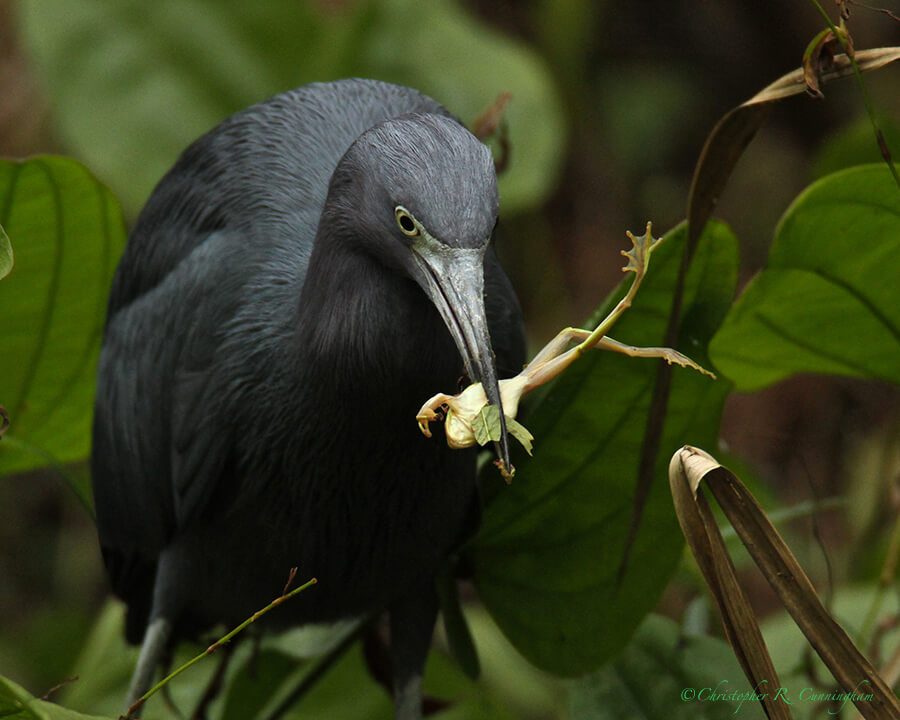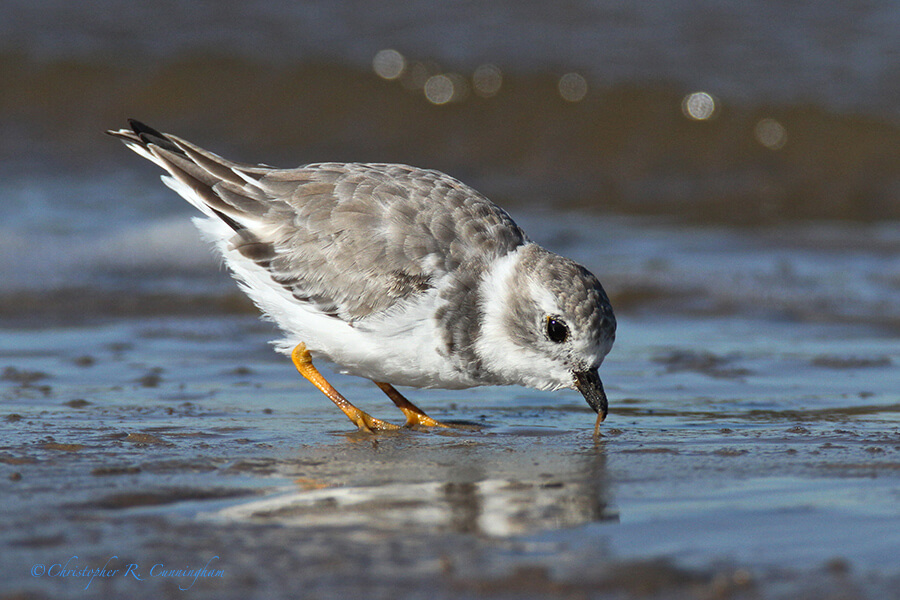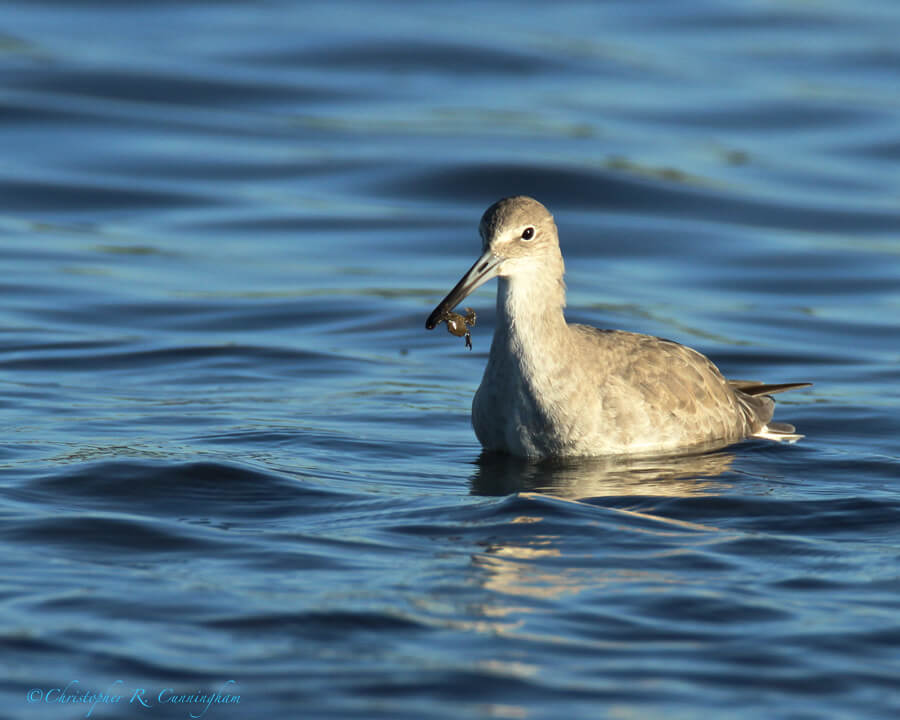
Hunting High. Recently I was stalking a Little Blue Heron as it worked its way through the vegetation at water’s edge, Pilant Lake, Brazos Bend State Park. The vast majority of the time, waders are looking down in their search for fish, amphibians and invertebrates. This time the bird was looking up, inspecting the plants as it went. I new what this meant, having seen it three or four times before at Elm Lake: The bird was after tree frogs! (Sidebar: sometimes waders act like this when they’re looking for dragonflies or spiders.) Interestingly, the water level in this part of the park seems to be down a bit from last year, and perhaps the tree frog hunt may be in response to this. Because I knew what was coming, I was able to get a nice series of shots documenting the bird eating four tree frogs.

Hunting at the surface. Cold weather fun can be had watching shorebirds pull infaunal invertebrates from tidal mudflats. Once in a while it’s a ghost shrimp or a crab, but often these meals are unidentifiable to me, and I just peg them as “worms.” I remember one of my professors on a rant about the term “worm” only being used out of a state of complete ignorance as many phyla of marine organisms could be lumped under that term. In this case, guilty as charged! Most of the time I have no idea what these little shorebirds are prying wriggling from the muck! It’s always exciting to watch, and every so often a bird grabs something big, nasty, and identifiable!
Hunting low. Perhaps the most suspenseful type of hunt to watch is one in which prey is sought from below the surface of the water. Sure, most of the time if you are in a freshwater environment, a small fish, tadpole, or larval invertebrate is plucked up, but sometimes really big prey items are dragged out thrashing and snapping. But turnabout is fair play. It’s not uncommon to see waders poking around in the shallows only to go running away squawking after having poked or prodded something really big, toothy and nasty like an alligator gar or . . . God knows what! And considering the beasties that swim beneath the waves of the salty seas, I marvel at the boldness of waders as they hunt in the marine shallows.

Finally, one of my goals for this winter is to capture images of a Great Blue Heron grappling with a Siren intermedia. During winter, the place to look for these giant amphibians being dragged from their burrows is the edge of Pilant Lake just north of the observation tower. However, this year the terrain in this area looks very different from the recent past: It is drier and much overgrown. Fortunately, Pilant Slough just to the south and east looks very much like Pilant Lake has in recently past years. This occurred to me as I noted a Great Blue standing right in the middle of the slough. Clearly, this is the spot to watch for the siren hunt this year!
Perhaps, after all, America never has been discovered. I myself would say that it had merely been detected.—Oscar Wilde
©2014 Christopher R. Cunningham. All rights reserved. No text or images may be duplicated or distributed without permission.